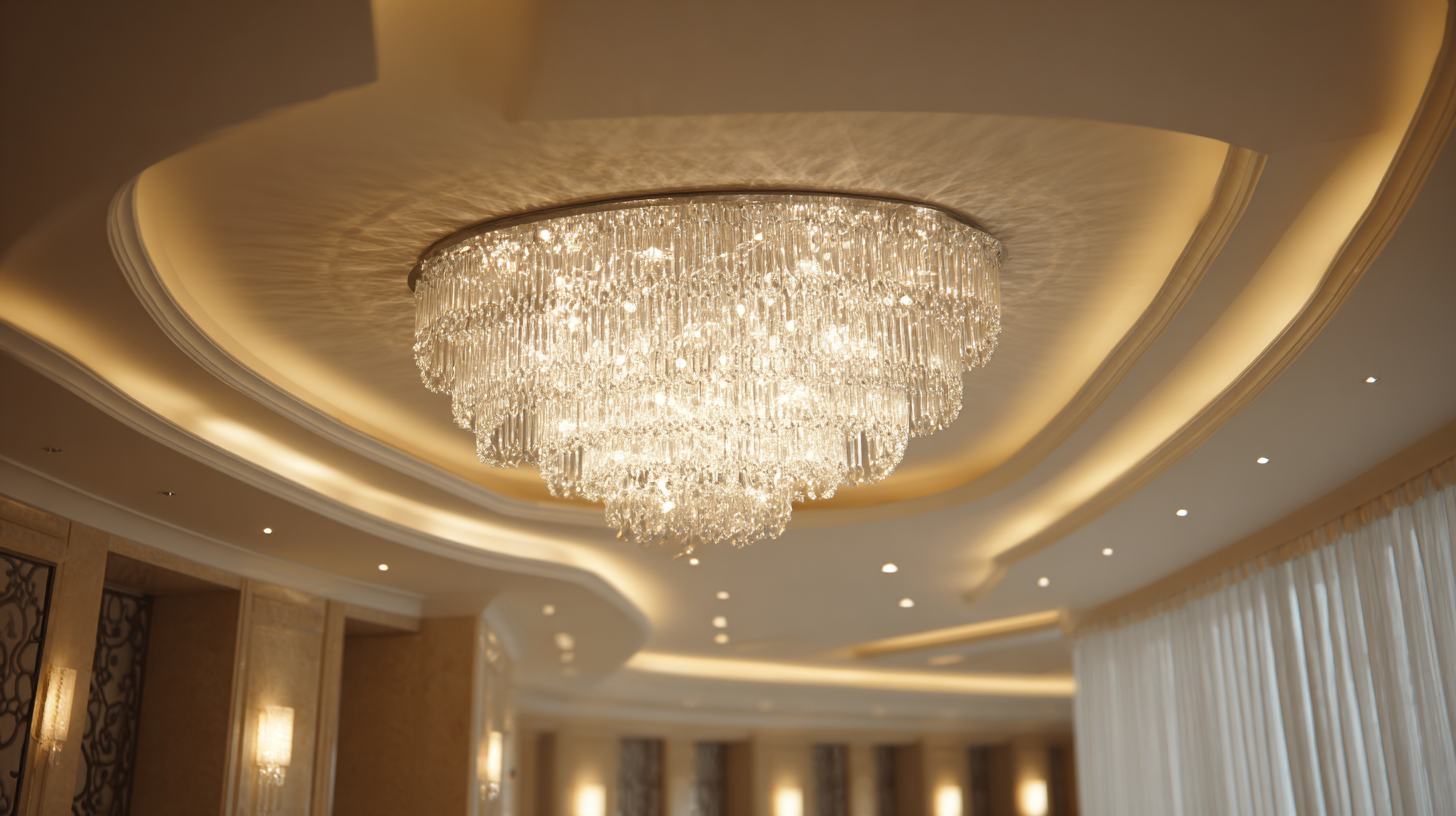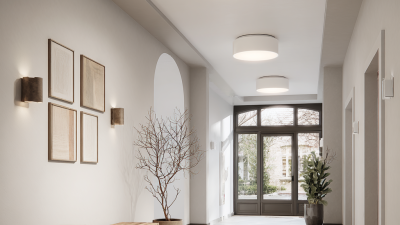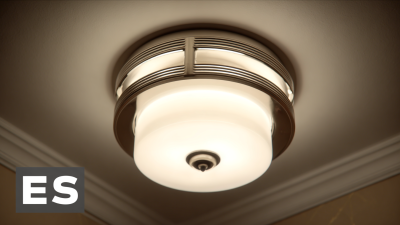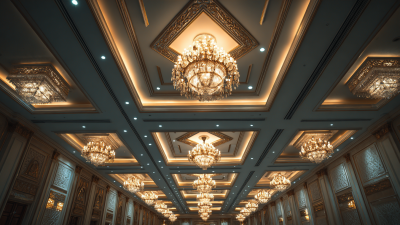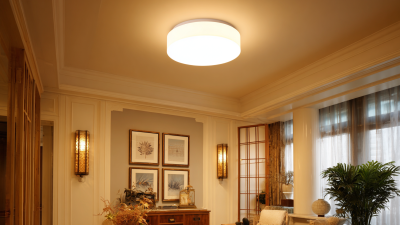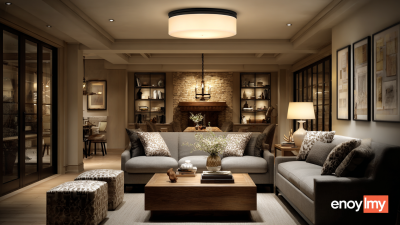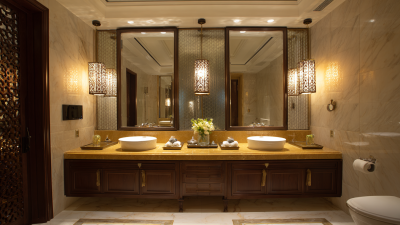What are the Benefits of Using Ceiling Lights For Hall
Ceiling Lights For Hall play a crucial role in enhancing the aesthetic and functional aspects of hallways and entryways within residential and commercial spaces. According to a report by the American Lighting Association, well-illuminated spaces can increase a property's value and create a welcoming atmosphere for guests. Ceiling lights provide uniform illumination, reducing shadows that can make areas feel cramped or uninviting. Additionally, research from the Lighting Research Center indicates that strategically placed ceiling fixtures can improve visibility and safety, which is particularly important in high-traffic areas. As design trends evolve, innovative ceiling light designs are emerging that not only fulfill practical needs but also serve as statement pieces, ultimately transforming ordinary halls into visually appealing and inviting pathways. By incorporating modern ceiling lights, homeowners and businesses alike can achieve a balance of style and functionality, making them a pivotal element in interior design.
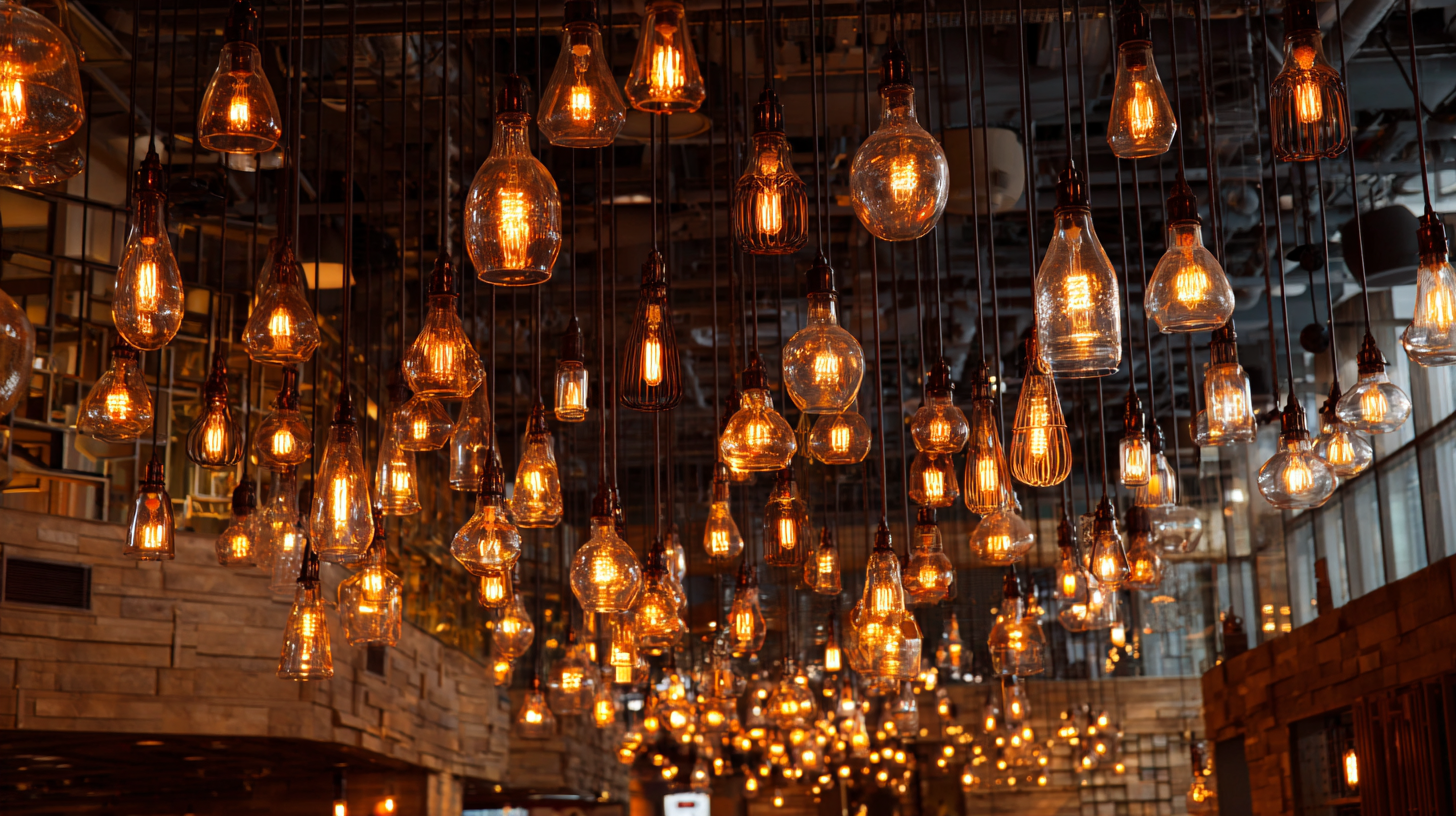
Understanding the Role of Ceiling Lights in Hallways
Ceiling lights play a crucial role in enhancing the functionality and aesthetic appeal of hallways. According to a report by the American Lighting Association, proper illumination is essential for the safety and navigation in transitional spaces like hallways. Well-placed ceiling lights not only brighten these areas but also create an inviting atmosphere. Research indicates that adequate lighting can reduce accidents by up to 40%, highlighting the importance of choosing appropriate ceiling fixtures that provide sufficient illumination.
Moreover, ceiling lights offer versatility in design and functionality. A study conducted by the Lighting Research Center found that layered lighting, which includes overhead (ceiling) lights, can improve the perception of space and comfort in hallways. Utilizing different types of ceiling lights, such as recessed lighting or flush mounts, allows homeowners to customize the ambiance according to their preferences. With advancements in energy-efficient lighting, like LED options, users can enjoy significant cost savings on their electricity bills while maintaining a well-lit, aesthetically pleasing environment in their hallways.
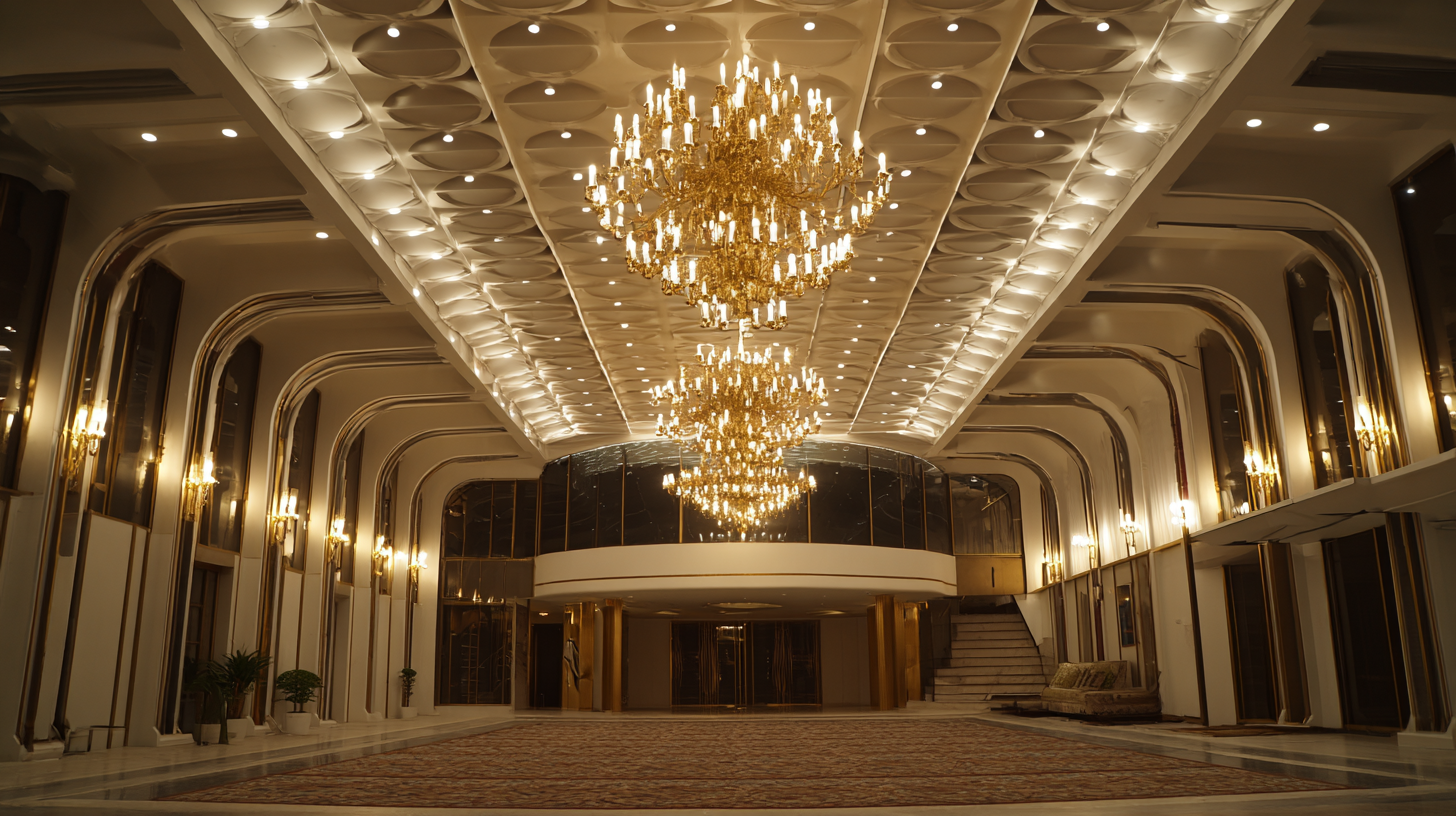
Choosing the Right Style of Ceiling Lights for Your Hall
When choosing the right style of ceiling lights for your hall, it's essential to consider both functionality and aesthetics. Ceiling lights can significantly enhance the overall ambiance of your space. According to industry data, well-designed lighting can increase the perceived value of a room by up to 20%. Selecting fixtures that complement your hall's décor can create a cohesive look while setting the right mood for your entryway. Options like recessed lighting or stylish chandeliers can provide general illumination and also serve as statement pieces.
In addition to aesthetics, it's crucial to select lighting that meets the practical needs of the space. The latest designs highlight the importance of different light temperatures and intensities; warm white lights create a cozy atmosphere, while brighter options can enhance visibility. Recent reports suggest that layered lighting, which combines ceiling lights with wall sconces and accent fixtures, can create depth and interest in the design. The right balance can turn your hall from a mere passageway into an inviting prelude to your home.
Maximizing Space with Proper Ceiling Light Placement
Proper ceiling light placement can significantly enhance the overall ambiance of a hall, transforming it into a welcoming and functional space. By strategically positioning ceiling lights, you can create a sense of openness, making even the smallest halls feel spacious. For instance, placing fixtures closer to the center of the room allows for an even distribution of light, minimizing shadows and ensuring that every corner is well-lit. Additionally, using dimmable lights can help adjust the brightness according to the occasion, further maximizing the utility of the space.
Moreover, the height at which ceiling lights are installed plays a crucial role in maximizing space. By opting for flush or semi-flush mounts, you can avoid the claustrophobic feeling that often accompanies low-hanging fixtures. This choice not only saves vertical space but also enhances the aesthetic appeal of the hall. Incorporating integrated LED ceiling lights can also contribute to a contemporary look while providing sufficient illumination without taking up visual space. Ultimately, thoughtful ceiling light placement not only improves the functionality of a hall but also elevates its style and comfort.
Space Utilization Benefits of Ceiling Lights in Halls
Enhancing Ambiance: Lighting Techniques for Hall Ceilings
When it comes to enhancing the ambiance of a hall, ceiling lights play a crucial role in setting the mood and overall experience. The right lighting technique can transform a simple space into an inviting environment. For instance, dimmable ceiling lights allow for adjustable brightness, enabling the space to shift from a bright, energetic feel during daytime to a softer, more relaxed atmosphere in the evening. Incorporating warm-toned bulbs also adds a touch of coziness, making gatherings more intimate.
In addition to brightness control, layering different types of ceiling lights can create depth and interest. Combining recessed lighting with pendant fixtures can highlight architectural features and artwork while providing general illumination. Furthermore, utilizing directional lights can focus attention on specific areas, enhancing the visual appeal of the hall. Incorporating these lighting techniques not only improves functionality but also promotes a pleasant ambience that resonates with guests, making every visit memorable.
What are the Benefits of Using Ceiling Lights For Hall - Enhancing Ambiance: Lighting Techniques for Hall Ceilings
| Lighting Techniques |
Benefits |
Ideal Usage |
| Recessed Lighting |
Creates a clean, modern look while saving space |
Living rooms and dining areas |
| Chandeliers |
Adds elegance and a focal point to the room |
Entrances and dining areas |
| Pendant Lights |
Versatile design options enhance style while providing task lighting |
Kitchen islands and dining tables |
| Track Lighting |
Flexibility to highlight artwork or specific areas |
Gallery-style rooms and home theaters |
| LED Strip Lights |
Energy-efficient and customizable for mood lighting |
Accent lighting around ceilings and coves |
| Flush Mount Lights |
Low-profile design suitable for rooms with low ceilings |
Hallways and small rooms |
Energy Efficiency Considerations for Ceiling Lights in Halls
When considering lighting solutions for halls, energy efficiency becomes paramount. According to the
U.S. Department of Energy, energy-efficient ceiling lights can reduce electricity bills by up to 75% compared to traditional incandescent fixtures. This significant reduction is achieved through advanced technologies such as LED lighting, which not only consumes less power but also has a lifespan of up to 25 times longer than incandescent bulbs. This longevity translates to fewer replacements and reduced waste, making LED ceiling lights a sustainable choice for hall lighting.
When choosing ceiling lights for your hall, consider the size of the space and the corresponding wattage and lumens required to achieve optimal illumination. A well-lit hall enhances visibility and ambiance, but excessive wattage can lead to wasted energy. It’s recommended to use dimmable LED fixtures, allowing for adjustable brightness depending on the occasion.
Tips:
1. Make sure to install motion sensors for added efficiency, ensuring that lights only turn on when the hall is in use.
2. Regularly clean ceiling light fixtures to maintain maximum brightness and efficiency, as dust buildup can significantly reduce light output.
3. Utilize natural daylight as much as possible by choosing ceiling lights that complement large windows or skylights, minimizing the need for artificial lighting during daylight hours.

Home
About Byone
Factory Tour
Products
Project Portfolio
Download
Blog
Contact Us


